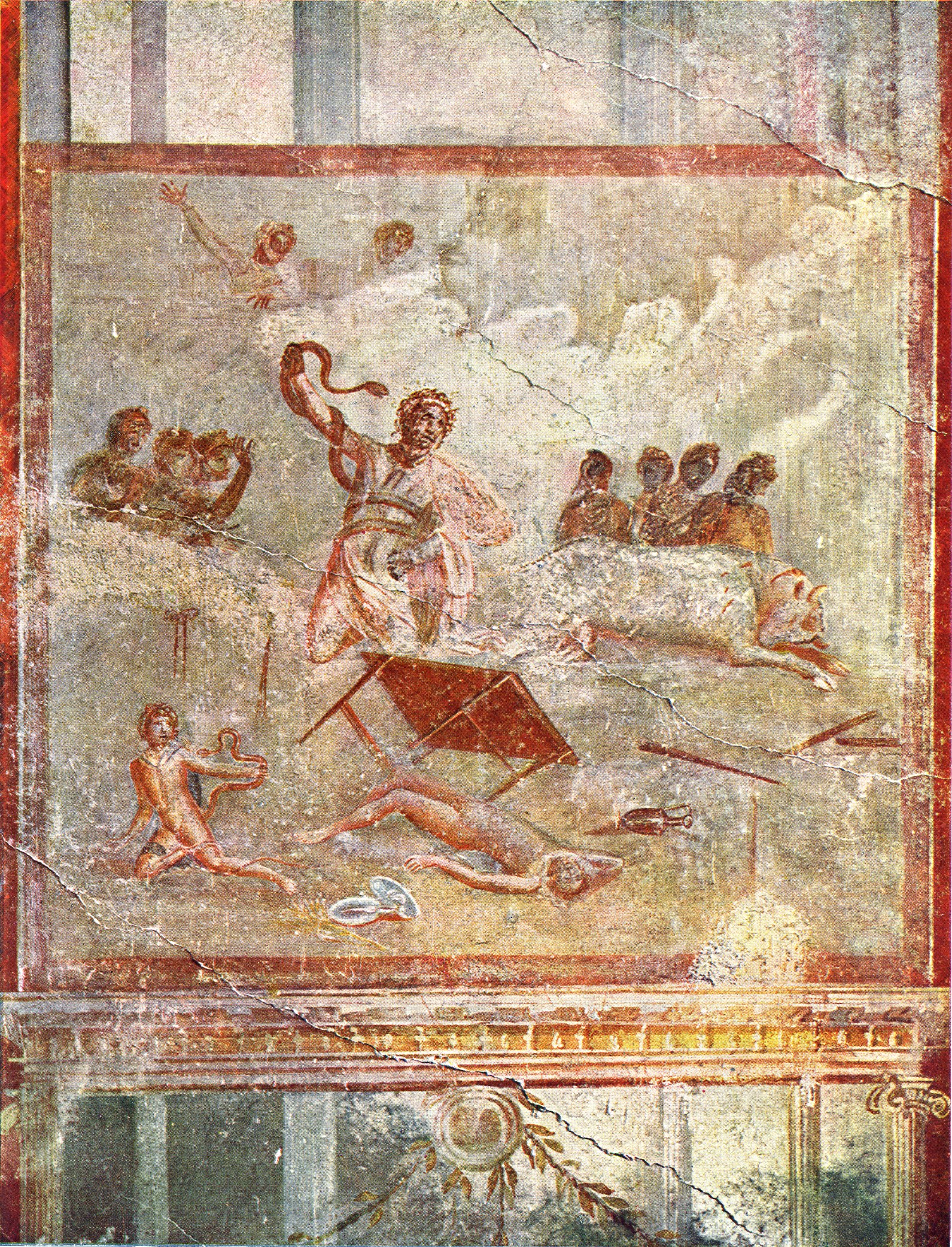Pompeiian Wall Paintings


Two Pompeiian wall-paintings of Laocoön survived the eruption of Vesuvius AD 79, when erupted: what destroyed Pompeii's citizens beautifully preserved these paintings. The first, from the Casa di Laocoonte, is now held in the Museo Archeologico Nazionale, Naples. The second can still be found in the Casa del Menandro, Pompeii.
The two paintings have significant details in common. The Casa di Laocoonte painting shows Laocoön in a position similar to his position in the Vatican sculpture, on a three-stepped platform, with one leg outstretched to the bottom step. Although the left side of the painting is destroyed, it is likely that his right leg was depicted bent or even in the Pathosformel position (resting on one knee). That positioning would correspond to the positioning of Laocoön in the Casa del Menandro wall painting. Both paintings place the two sons in the foreground, with one dead and abandoned by his serpent, and the other still struggling. In both instances the struggling son kneels on one knee, repeating (Casa del Menandro) or mirroring (Casa di Laocoonte) the Pathosformel attitude of his father. Other similarities include: the nakedness of the two sons (apart from capes in the Casa di Laocoonte painting), which contrasts with the priestly garments of Laocoön; the detail of an upset wine-jug; the escaping sacrificial bull; and a group of onlookers behind the bull.
There are a couple of differences between the paintings. The painting in Casa del Menandro shows several additional figures, although these might also have been present in the now lost left-hand portion of the Casa di Laocoonte painting. The background of the Casa del Menandro painting appears to be more impressionistic than the temple visible in the Casa di Laocoonte painting.
The similarities between the two paintings suggests that one was more or less copied from the other, or that they were influenced by a common source. It is doubtful that this source could have been a Laocoön representation of the earliest type, since the iconography of the two wall paintings is relatively advanced (seen not least in the inclusion of a toppled wine-jug). If they are both copies of some earlier work, that work may have been a painting too: where else would the depth of perspective be possible which produces the foregrounding of the sons and the background figures in both wall paintings, and in what other medium would the inclusion of an upset wine-jug be possible?
The wall paintings present Laocoön wearing the wreath of Apollo's priest, and so belong to the Sophoclean tradition. That Virgil was not an artistic influence here is also evident in the fact that the serpents do not appear as he describes them.
The relation of these paintings to the Laocoön images found on the Etruscan scarab and the Vatican sculpture is unclear. The latter are probably derived from a sculptural archetype. The Pompeian paintings, by contrast, exhibit none of their sculptural cohesion. Father and sons are separate, not held together by the serpents, and the second (dead) son is no longer entangled in the coils of a serpent at all. The absence of a serpent from the body of the dead son, moreover, indicates a sequence of events in the paintings that contrasts the similtunaity of the scarab and Vatican groups.
Resources available


